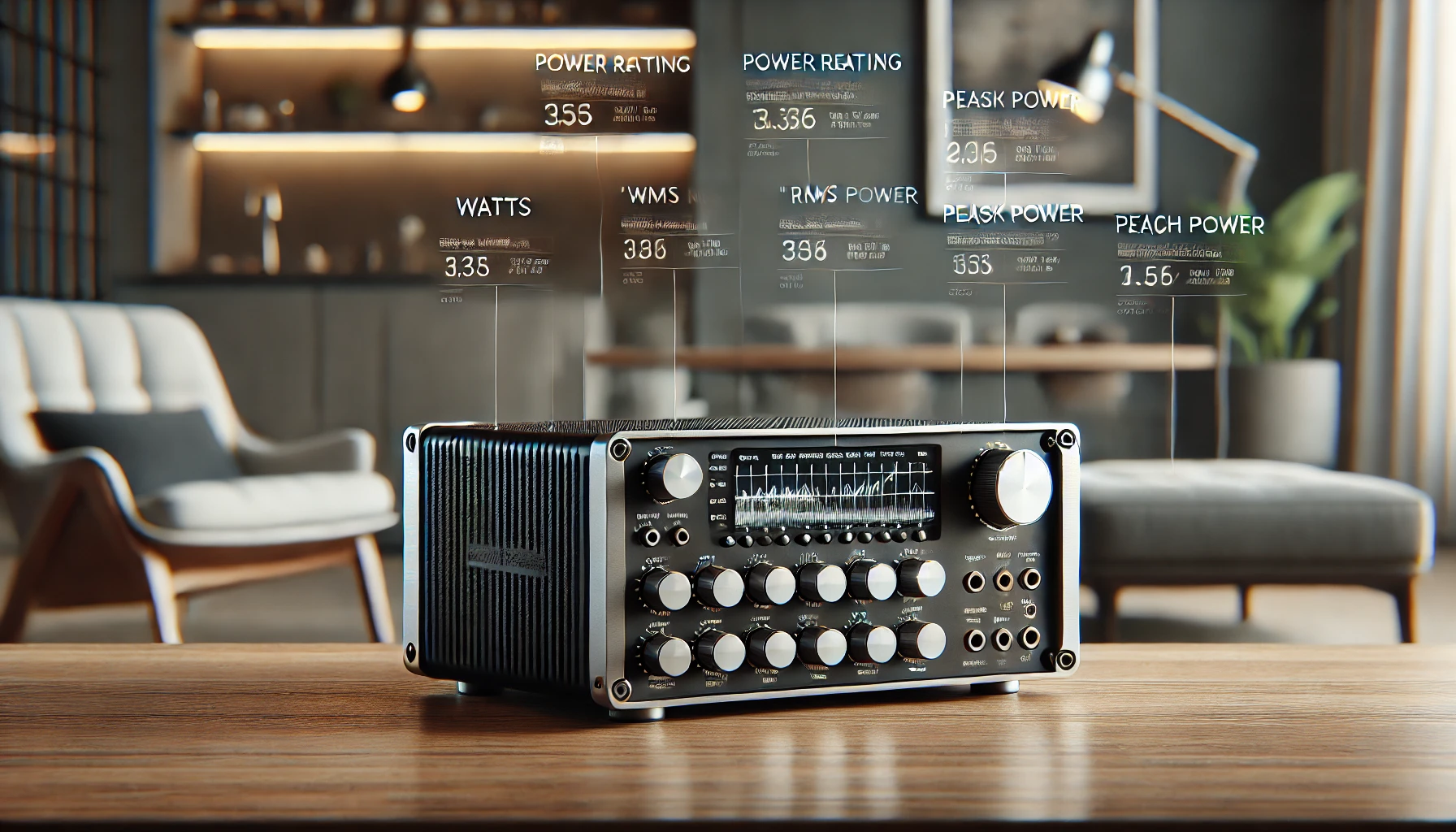Power Ratings in Amplifiers
When it comes to amplifiers, one of the most critical specifications you’ll encounter is the power rating. Whether you’re an audiophile setting up a home theater system or a professional sound engineer, understanding power ratings is essential to optimizing your audio experience. In this article, we’ll delve into what power ratings are, why they matter, and how to choose the suitable amplifier for your needs.
Understanding Power Ratings
What Are Power Ratings?
Power ratings indicate the amount of electrical power an amplifier can deliver to speakers without distorting the sound. This measurement is typically expressed in watts (W) and can significantly influence the performance and longevity of both your amplifier and speakers.
Why Power Ratings Matter
Power ratings are crucial because they determine how well your amplifier can drive your speakers. If the power rating is too low, your system might not be able to produce sufficient volume, which could lead to distortion at higher levels. Conversely, an amplifier with a power rating that is too high can damage your speakers if not managed correctly.
Types of Power Ratings
There are several types of power ratings you should be aware of:
- Continuous Power (RMS): This is the most reliable measurement, indicating the average power the amplifier can output over a long period.
- Peak Power: This rating shows the maximum power the amplifier can deliver in short bursts. While it’s a less critical figure, it can give insight into the amplifier’s dynamic capabilities.
- Dynamic Power: This refers to the power the amplifier can provide during brief dynamic peaks, such as an explosion in a movie.
How to Read Power Ratings
Interpreting the Numbers
When examining an amplifier’s specifications, you’ll often see multiple power ratings listed. Here’s a quick guide to what they mean:
- RMS Power: Look for the RMS (Root Mean Square) rating, which provides a consistent measure of the amplifier’s capability.
- Peak Power: This can be much higher than the RMS rating and is helpful for understanding how the amplifier handles sudden increases in demand.
- Impedance Matching: Ensure the power ratings are specified for the impedance (measured in ohms) that matches your speakers. Typical impedances are 4, 6, and 8 ohms.
Matching Amplifiers to Speakers
One of the most critical aspects of amplifier selection is matching it to your speakers. Here’s an informative list to help you:
- Check the Speaker’s Power Handling: This is the range of power the speaker can handle, usually expressed in watts. Ensure your amplifier’s RMS power rating is within this range.
- Consider the Room Size: Larger rooms may require more power to fill the space with sound effectively.
- Think About Your Listening Habits: If you enjoy listening at high volumes, you might need an amplifier with a higher power rating.
- Look at the Sensitivity Rating: Speakers with higher sensitivity ratings (measured in dB) require less power to produce the same volume level as lower-sensitivity speakers.
Common Misconceptions
More Power Equals Better Sound
A common misconception is that more power always means better sound quality. While higher power ratings can provide more headroom and reduce distortion, they aren’t the sole determinant of sound quality. Factors like amplifier design, speaker compatibility, and room acoustics also play significant roles.
All Power Ratings Are Created Equal
Not all manufacturers use the same standards when measuring and reporting power ratings. It’s essential to compare specifications carefully and, when possible, refer to independent reviews and tests for accurate assessments.
Practical Tips for Choosing an Amplifier
Determine Your Needs
Start by assessing your audio needs. Are you setting up a home theater, building a hi-fi system, or creating a professional studio? Each application may have different power requirements.
Budget Considerations
While it’s tempting to go for the most potent amplifier within your budget, it’s more important to balance power with quality. Look for reputable brands and models with solid reviews rather than focusing solely on wattage.
Integrated vs. Separate Components
Decide whether you need an integrated amplifier (which combines a preamp and power amp in one unit) or separate components. Integrated amplifiers are more convenient and cost-effective, while separates can offer higher performance and flexibility.
Maximizing Audio Performance with the Right Amplifier
Choosing the suitable amplifier involves more than just picking the highest power rating. Understanding how power ratings interact with your speaker’s impedance and sensitivity can significantly enhance your audio experience. For instance, an amplifier with a well-matched power rating can deliver clear, distortion-free sound even at higher volumes. Additionally, considering the continuous power (RMS) rating ensures that your amplifier can consistently provide the necessary power for prolonged listening sessions. This attention to detail not only protects your equipment but also guarantees optimal performance and longevity.
Conclusion
In conclusion, understanding the importance of power ratings in amplifiers is crucial for anyone serious about audio quality. By paying attention to RMS power and peak power and ensuring proper impedance matching, you can make informed decisions that enhance your listening experience. Remember, the correct amplifier not only powers your speakers effectively but also brings out the best in your audio system.
Investing the time to understand these concepts will pay off in the long run, providing you with a system that delivers exceptional sound quality, reliability, and enjoyment for years to come. So, next time you’re in the market for an amplifier, keep these tips in mind and choose wisely for the best audio experience possible.

